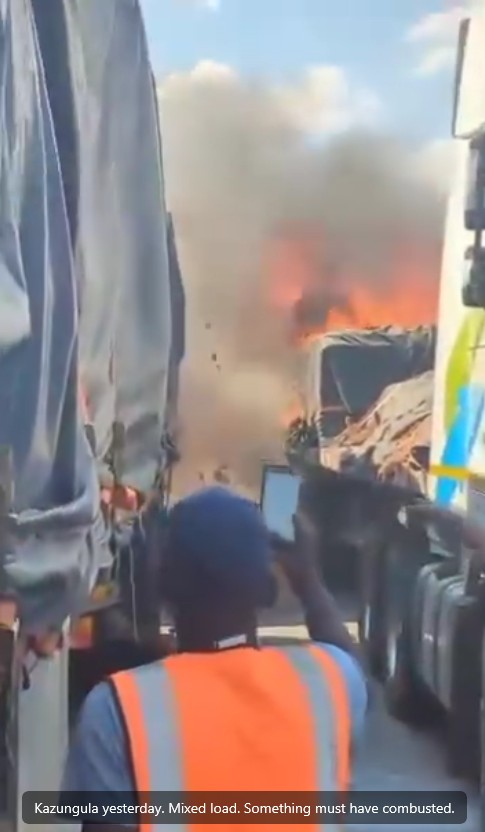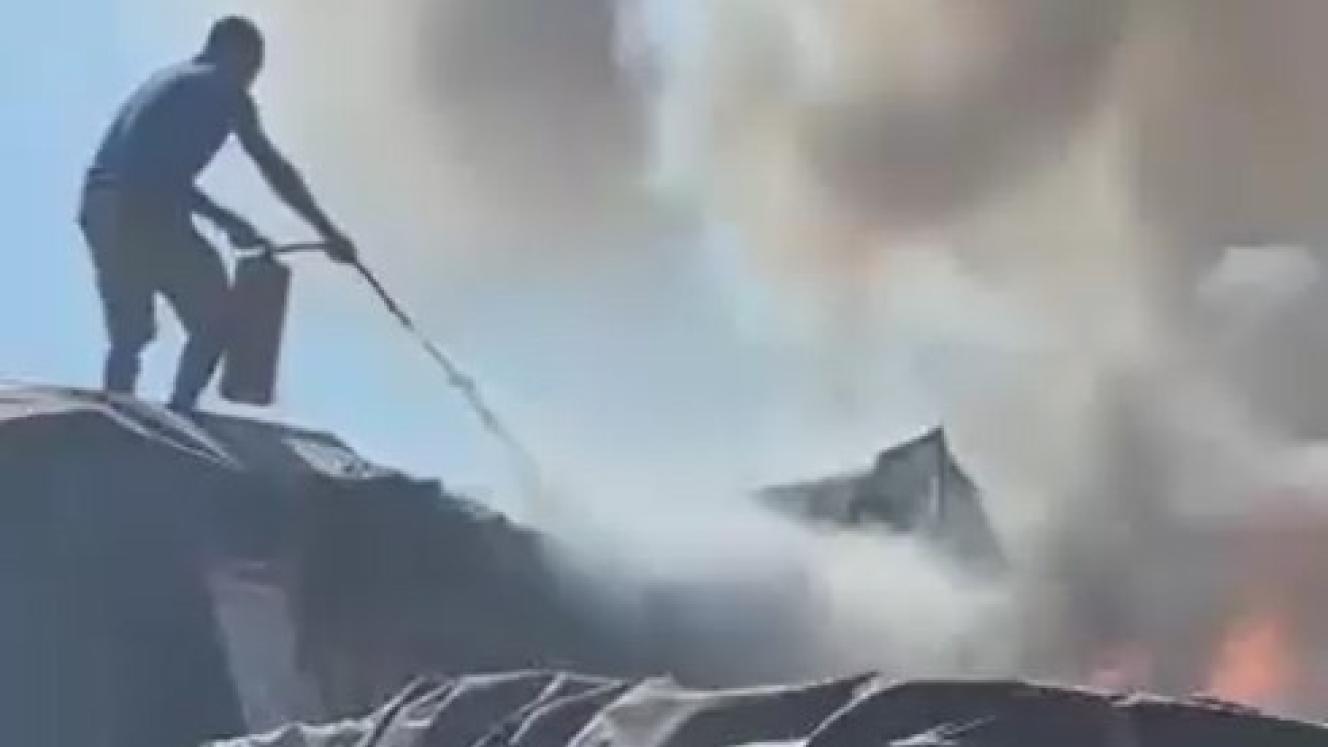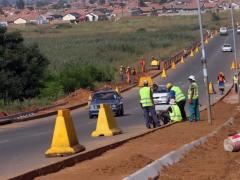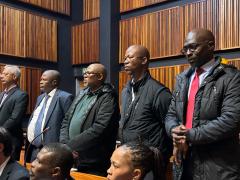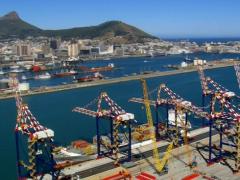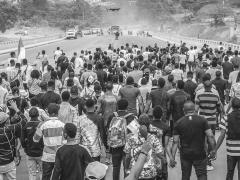A dangerous goods (DG) fire at the most efficient border crossing on the Copperbelt route from South Africa through Botswana is highlighting the urgent need for increased measures to control certain types of cargo.
Saturday afternoon’s fire on the Zambian side of the Kazungula One-stop Border Post (OSBP) occurred when a mixed load of hazardous chemicals on a parked truck spontaneously combusted, said Mike Fitzmaurice of the Transit Assistance Bureau (Transist).
He said the northbound truck had been inside the OSBP’s control zone, surrounded by other trucks.
Authorities managed to clear most of the trucks out of the parking area, but not before the fire had spread to another truck.
Attempts to douse the fire with dry powder were unsuccessful and both trucks at the centre of the blaze were completely gutted.
“We’re not entirely sure what happened but it seems that some chemicals might have come into contact with one another, causing combustion,” Fitzmaurice said.
He pointed out that the most alarming aspect of the weekend’s incident was that there were no firefighting facilities on site to address the situation.
“In the end, there was nothing they could do except let the trucks burn out.”
What is known is that the driver’s cargo was cleared but he had left his truck, carrying DG, parked inside the border zone.
“That shouldn’t be allowed at all,” Fitzmaurice said.
“Once a truck has been cleared, it should be forced to leave the border area in 30 minutes, no more, especially if it’s carrying dangerous cargo. If it overstays that period, it should be fined.”
Fitzmaurice says the loss of property was bad enough, but it could have been so much worse.
He added that it had come as a surprise that the fire had occurred at Kazungula and not at Groblersbrug further south on the Copperbelt route, where trucks continued to wait for two days or more.
In early September, when congestion at the Limpopo River crossing started, presumably because of a spike in demand for acid at mines spread throughout the Copperbelt, road freight operators regularly complained about the DG truck park on South Africa’s side of the border.
The facility easily filled because of the days-long queue on the N11, and all sorts of transporters were allowed into a park meant for DG hauliers.
The Cross-Border Road Transport Agency, established to facilitate South African long-distance operators serving the region, said there was nothing they could do as the truck park is privately owned.
“We keep talking about the need for increased regulation of DG cargo,” said Fitzmaurice, who also serves as sub-Saharan vice president of the Union Africaine des Organisations des Transports et de la Logistique.
“It’s unfortunate that these things must happen before we start paying attention to the risk on routes such as the one to the Copperbelt. What we need at the moment is to tighten border management control and implement a separate set of rules and regulations for dangerous cargo.”
He said it was regrettable that authorities along the Copperbelt route seemed not to have learned from 2013’s fire involving 43 trucks at the Kasumbalesa Border Post between Zambia and the Democratic Republic of the Congo (DRC).
A more recent fire, also at a Copperbelt border between Zambia and the DRC, spread between several trucks at Sakania, a popular crossing for tankers heading to the mines.
Fitzmaurice said since Saturday’s fire, he had approached AUDA-Nepad, the African Union’s Development Agency, and was waiting for a response.
